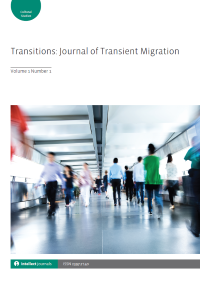
Full text loading...

Over the last decade, scholars have declared the collapse of the Mexico–US system of undocumented migration. The H2 visa programme, a regime of managed sojourning is replacing the system of unauthorized cross-border mobility. In fiscal year 2023, the US government issued nearly 370,000 H2 temporary work visas to Mexicans. This temporary migrant labour programme is also bringing back circulation, temporary legal stays, and mostly male cross-border mobility – features that are akin to the old Bracero Program (1942–64). We contend that the restoration of these legal and sociodemographic dynamics undermines critical pillars of the system of undocumented labour mobility, limiting and reorienting the role of social networks, and potentially ending the way Mexico–United States has functioned for the past half century. We use ethnographic, interview and survey data to analyse the expansion of this new regime of highly mediated cross-border mobility, the ascent of the brokerage apparatus, and its effect transforming the social infrastructure of migration. We ask, specifically, how does the H2 temporary migrant labour programme constrain and diminish kin and hometown-based social networks, previously seen as ‘the engine of migration’? How does the shift from migrant networks to a brokerage apparatus impact trust, reciprocity and the development of migratory social capital? How is the new regime changing the experience of migration – substituting risk and adventure for certainty and routinized movement? How does the H2 temporary migrant labour programme revert the locus of social reproduction of the labour force back to sending communities, preempting integration at the destination? We frame the answers to these questions in the emerging migration industry and infrastructures paradigm, which examines to the role of migrant and non-migrant actors in the facilitation, control and overall mediation and structuring of cross-border mobility.